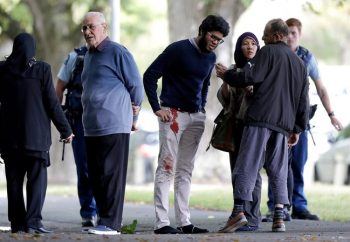Evan Osnos in The New Yorker:
 The New Zealand killer takes his place in the cracked pantheon of violent, Trump-admiring extremists: beside the gunman at the Tree of Life synagogue, in Pittsburgh, who blamed Jews for resettling refugees and immigrants, whom Trump vilifies as the center of his politics; beside the van-dweller in Miami who found purpose amid the throngs of Trump rallies and set about sending pipe bombs to George Soros, journalists, and Democrats. The New Zealand killer did not exact his violence in America, but he would be at home in our statistics: in the past decade, seventy-three per cent of all American extremist-related killings have come from the right wing, compared to twenty-three per cent from Salafi jihadism and three per cent from the left wing, according to the Soufan Center, which studies global security.
The New Zealand killer takes his place in the cracked pantheon of violent, Trump-admiring extremists: beside the gunman at the Tree of Life synagogue, in Pittsburgh, who blamed Jews for resettling refugees and immigrants, whom Trump vilifies as the center of his politics; beside the van-dweller in Miami who found purpose amid the throngs of Trump rallies and set about sending pipe bombs to George Soros, journalists, and Democrats. The New Zealand killer did not exact his violence in America, but he would be at home in our statistics: in the past decade, seventy-three per cent of all American extremist-related killings have come from the right wing, compared to twenty-three per cent from Salafi jihadism and three per cent from the left wing, according to the Soufan Center, which studies global security.
Pointing out those patterns does not feed oxygen to the sources; it subjects them to the disinfecting power of sunlight. We can only have an honest analysis of the sources of this violence if we understand how it grows and spreads. That applies not only to the role of journalism but also to the role of technology. Whenever a killer relies, as he did in this case, on the Internet to amplify the effects of his terror, some inevitably defend social media as no better and no worse than the humanity that uses it. Don’t blame the hammer, we are told; blame the hand. At best, that is a deflection. One does not have to be a Luddite to believe that the worst of social media is not a mirror image of us; it is a grotesque distortion, a funhouse mirror that bulges and squeezes and disfigures us in ways that mock our humanity instead of reinforcing it.
Once again, Facebook finds itself scrambling to explain how it will prevent its creations from being used for harm.
More here.
